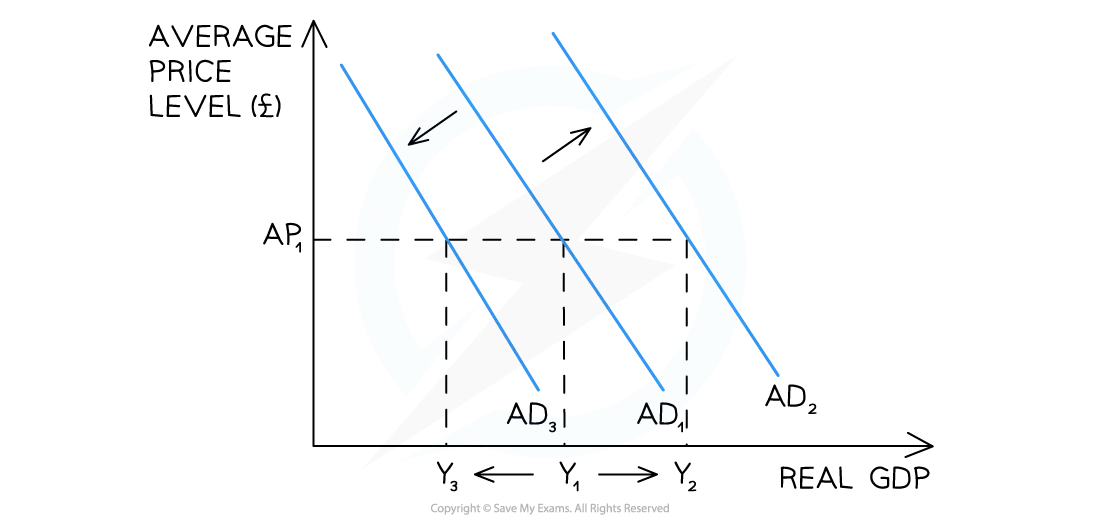The Influence of AD on the Level of Economic Activity
- Aggregate demand (AD) is a major determinant of overall level of output (GDP) and employment in the economy
Diagram: The Influence of AD on Real GDP

A change to any determinant of AD will have an impact on the level of real GDP in the economy
Diagram analysis
- When an injection occurs in the economy, such as through increased government spending or investment, the AD curve will shift to the right (AD1 to AD2)
- This increases the overall level of real output
- When real output increases, firms typically need to hire additional workers to meet the higher demand for goods/services
- The increased employment is linked to an increase in economic growth
- When a withdrawal occurs in the economy, such as through more taxes or spending on imports, the AD curve will shift to the left (AD1 to AD3)
- This decreases the overall level of real output
- When real output decreases, firms typically reduce their workforce to align with reduced demand for goods/services
- The decreased employment is linked to a decrease in economic growth


